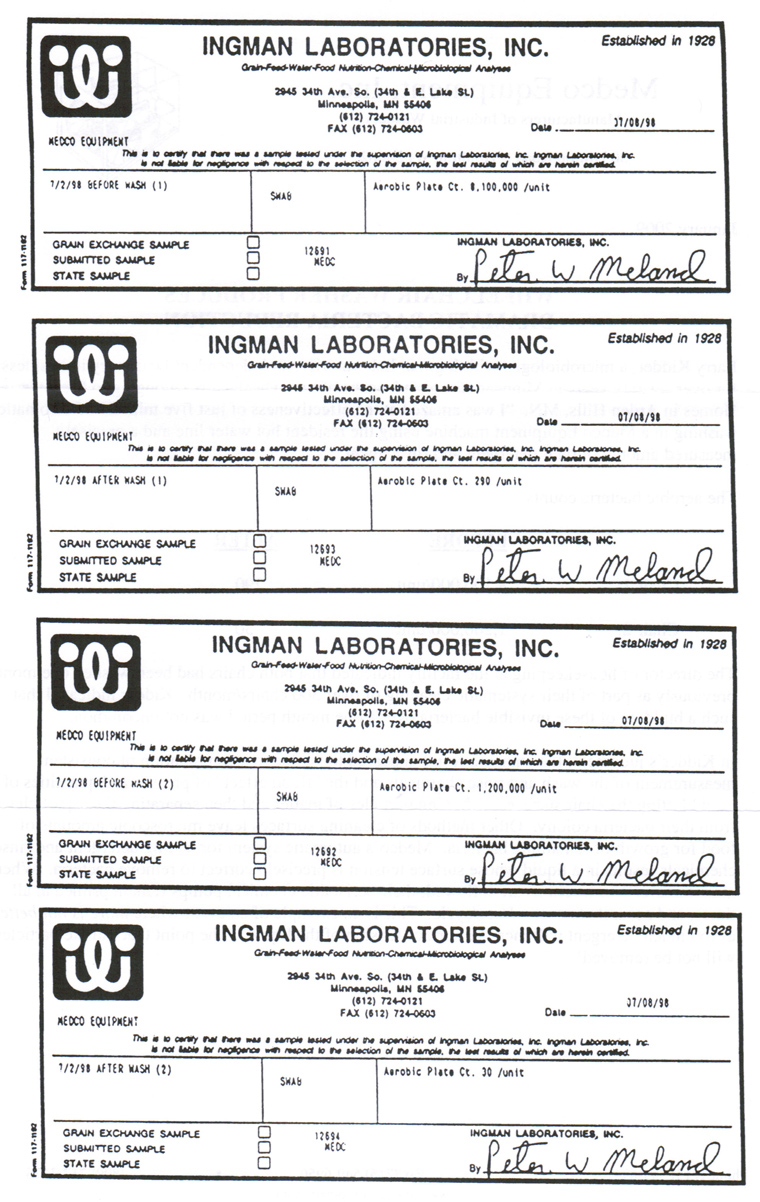January 2016
Wheelchair Washer Produces Dramatic Bacteria Reduction
Larry Kidder, a microbiologist with Ingman Laboratories, an independent laboratory in business for over seventy years in Minneapolis, tested swabs of two wheelchairs belonging to Presbyterian Homes in Arden Hills, MN. "I was amazed at the effectiveness of just five minutes of automatic washing in a Medco Equipment machine using the resident hot water line and a precisely measured amount of their detergent and rinse agent."
| The aerobic bacteria counts: | BEFORE | AFTER |
| Chair 1: | 8,100,000 | 290 |
| Chair 2: | 1,200,000 | 30 |
The director of housekeeping at the facility indicated that both chairs had been washed one month previously as part of their systematic cleaning of over 300 chairs/month. Kidder indicated that such a build up of these invisible bacteria over a one month period was not uncommon.
In Kidder’s judgment, the amazing result appeared to be due to a combination of consistent measurement of the wash and rinse chemicals and the "flood effect" of pressurized quantities of liquid hitting the chair surfaces, softening particles of matter and then separating these particles from their bacteria colony. Other methods of cleaning surfaces leave microscopic amounts of food for growth of remaining bacteria. Medco's automatic system for adding detergent and rinse chemicals results in a liquid whose surface tension is precisely correct to remove bacteria. When manufacturer's instructions are followed, their peristaltic chemical pumps remain primed at all times, and accurate to + or - ¼ cc/cycle. This is an example of an event where more is not better, as too much detergent will increase surface tension of the liquid to the point that minute particles will not be removed!


